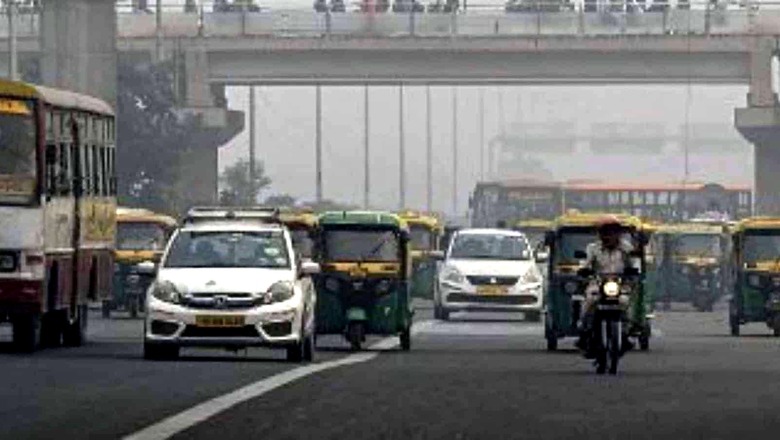
views
After three days, strong surface winds lowered pollution levels in the national capital marginally on Monday and its 24-hour average air quality index (AQI) at 4 pm was in the 'very poor' category at 390, according to agencies.
Delhi recorded 'severe' air quality for three days on the trot till Sunday due to accumulation of emissions from fireworks on Diwali and crop residue burning amid unfavourable meteorological conditions — low temperature, wind speed and mixing height.
An AQI between zero and 50 is considered 'good', 51 and 100 'satisfactory', 101 and 200 'moderate', 201 and 300 'poor', 301 and 400 'very poor', and 401 and 500 'severe'.
Though 5,450 farm fires, the highest this season, were recorded in neighboring states on Sunday, their share in Delhi's air pollution reduced from 48 per cent a day ago, the highest in three years, to 30 per cent on Monday due to a drop in transport-level wind speed, according to air quality forecast agency SAFAR.
The India Meteorological Department said the wind speed varied from eight kmph to 14 kmph. SAFAR predicted a marginal improvement in the air quality but said it will remain in the 'very poor' category.
Last year, the share of crop residue burning in Delhi's pollution had peaked at 42 per cent on November 5. In 2019, crop residue burning accounted for 44 per cent of Delhi's PM2.5 pollution on November 1. Environment Minister Gopal Rai had on Sunday written to the Centre, demanding that an emergency meeting of Punjab, Haryana, Uttar Pradesh and Rajasthan be called to discuss the issue of crop residue burning.
.
Delhi-NCR Air Quality to Fluctuate Between ‘Very Poor’ to ‘Severe’ This Week
The Central Pollution Control Board (CPCB) on Monday reviewed the air quality in Delhi-NCR observing that the contribution of stubble burning may rise in the next five days with the AQI fluctuating between ‘very poor’ and ‘severe’ categories. Taking stock of the situation, the central pollution watchdog directed the governments of Delhi, Haryana, UP and Rajasthan to ensure strict implementation of GRAP (Graded Response Action Plan) measures including the sprinkling of water on roads.
Implementing agencies have been asked to submit daily reports to concerned state pollution control boards and committees. The sub-committee convened a meeting on November 8 and reviewed air quality status as well as meteorological and air pollution forecast. “As per IMD’s forecast, winds are expected to be north-westerly for the next five days which may possibly lead to a high contribution of stubble burning. In addition, favourable meteorology may cause air quality to fluctuate between the higher end of ‘very poor’ and ‘severe’ category in the coming days, the CPCB said.
(With PTI inputs)
Read all the Latest India News here




















Comments
0 comment